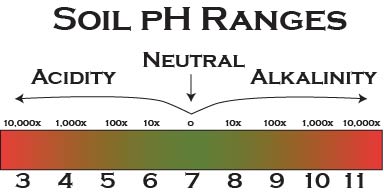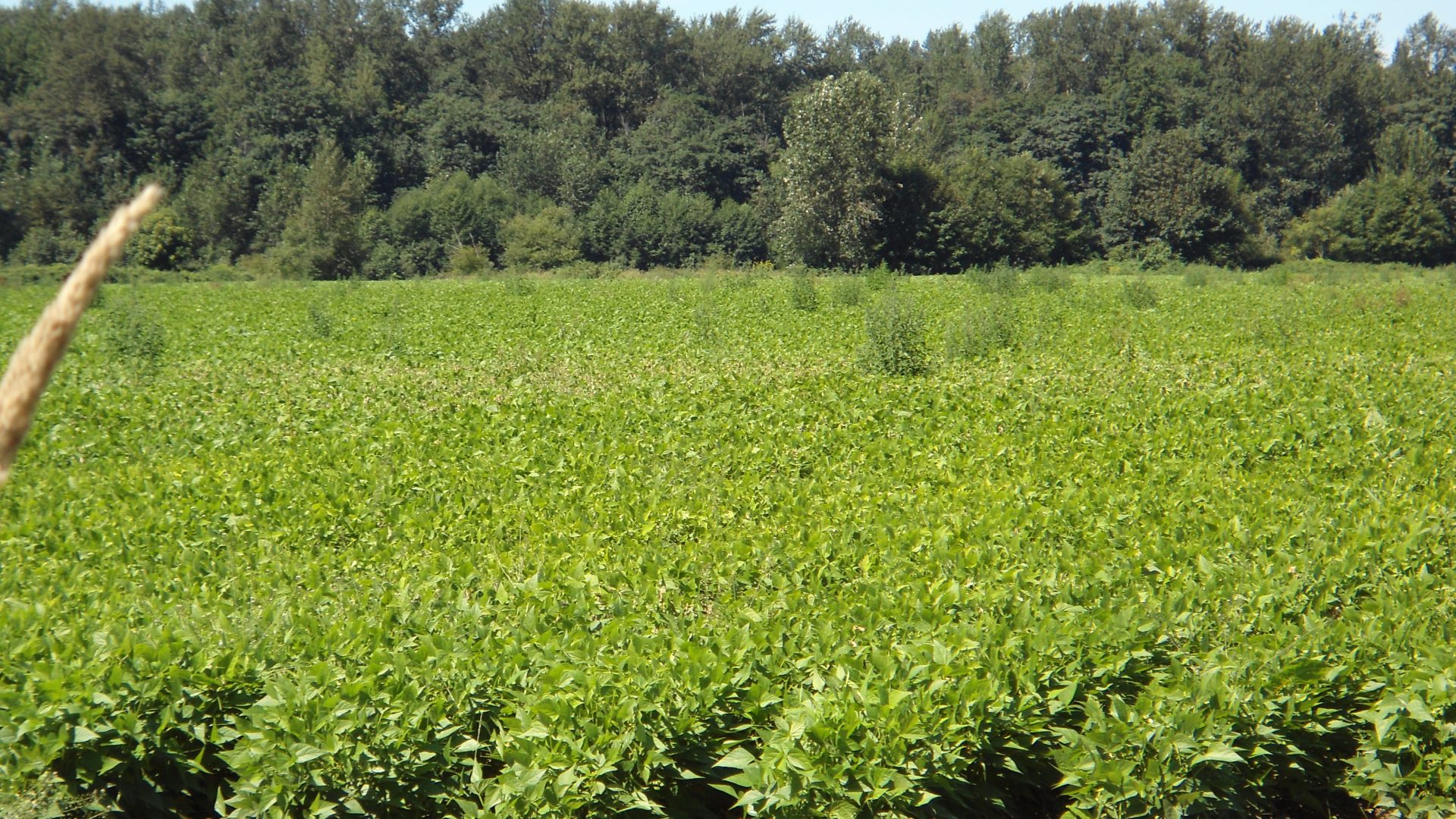When it comes to managing soil health in the Northwest, it’s easy to focus on the big three nutrients (nitrogen, phosphorus, and potassium) in the soil, and overlook a fourth key aspect – soil pH. Soil pH refers to how acidic (sour) or alkaline (sweet) soil is on a scale between 0 and 14, with 7.0 being neutral. Most plants and crops prefer soil pH levels in the 6.0 – 7.0 range.
Here in Western Washington, our soils are typically mildly to strongly acidic (5.0 – 6.5). Soil pH is important for a number of reasons. First of all, it controls the rate of chemical reactions and the activity of soil microorganisms. As you move towards the ends of the scale, different nutrients will either become more or less available for plants.
For example, phosphorus is readily available when soil pH is 6.5; decreasing the pH to 5.5 reduces its availability by half. Also, as soil pH decreases, the activity of beneficial nitrogen-fixing bacteria slows down and many detrimental disease-causing fungi become more active.

It’s important to factor pH levels into your fertilizer applications to ensure that nutrients will be available to plants. Often, after a lime application, a lawn or pasture may quickly ‘green-up’. This is due to nutrients already in the soil becoming available during the pH adjustment. Another reason why it’s important to manage pH is that certain crops grow better in either acidic soil or alkaline soil.
To achieve maximum plant health and growth, you want to adjust the pH accordingly. A plant is going to be healthier if it’s growing in its ideal soil conditions. This will help the plant better-compete with weeds, resist disease, and be more productive.
Right Rate
Adjusting soil pH is no easy task. It is a slow- and long-term process that will usually require several tons of lime over multiple years. It’s important to know exactly how much to apply to be both productive and economical. There are two main factors to look at when determining how much lime to apply:
Soil test results
Testing your soil is the most important thing you can do to determine the correct amount of lime you need to apply. The crop or plant to be grown Different plants desire different pH levels. Do not exceed applications greater than 2.5 tons per acre. If the soil requires more than that, split the recommendation into two separate applications and apply them at least three to four months apart.
Right Time
In general, lime can be applied year around. For the Pacific Northwest, there may be a slight advantage to applying it in the fall so the lime can be drawn down further into the soil profile during our rainy winter months. Lime usually takes three to four months to fully react with the soil. By applying it in the fall, this reaction can take place in advance of the spring planting/growing season.
Right Place
It’s best to till in lime to reduce losses from rain run-off and wind, and increase the amount of surface area exposed to your soil, allowing a faster reaction. Top-dressing is also a viable application method. A broadcast spreader is commonly used to apply lime. Pelleted lime works best in a broadcast spreader. If you don’t have one, you can contact the Conservation District to rent a pull-type spreader for liming your fields and pastures.

Right Source
When choosing the right source of lime, you want to look for three main things: purity or neutralizing value, particle size, and cost.
Purity or Neutralizing Value
Neutralizing value is expressed as a percentage of calcium carbonate equivalent (CCE), where pure calcium carbonate (CaCO3) is set at 100 percent. The higher the CCE, the greater the liming effect. Some aglime, such as dolomitic limestone, can have a rating higher than 100 percent. Aglime usually contains impurities such as clays, sand, and organic matter, which reduce CCE.
Particle Size
Often called “fineness of grind”, this factor determines how rapidly aglime will react and neutralize soil acidity. The finer the grind – the quicker it reacts and neutralizes.
- The down-side to a finer grind is that wind can be an issue during application. Also, in situations where appearance is a factor, use a pelletized form to prevent everything from being covered in lime dust.
- Some plants and crops do not like quick changes in pH, so a larger particle size may be desired to provide a more gradual/slower change.
Cost
Economics is always important. Always look at the calcium carbonate equivalent percentage (CCE) to determine the actual amount of liming effect you are purchasing.
Caution
Always use an Ag lime and not a chemical lime as it can burn. If you’d like your soil tested, please contact your local District. They may be able to help you put together a soil nutrient management plan specifically tailored for your needs and operation.





